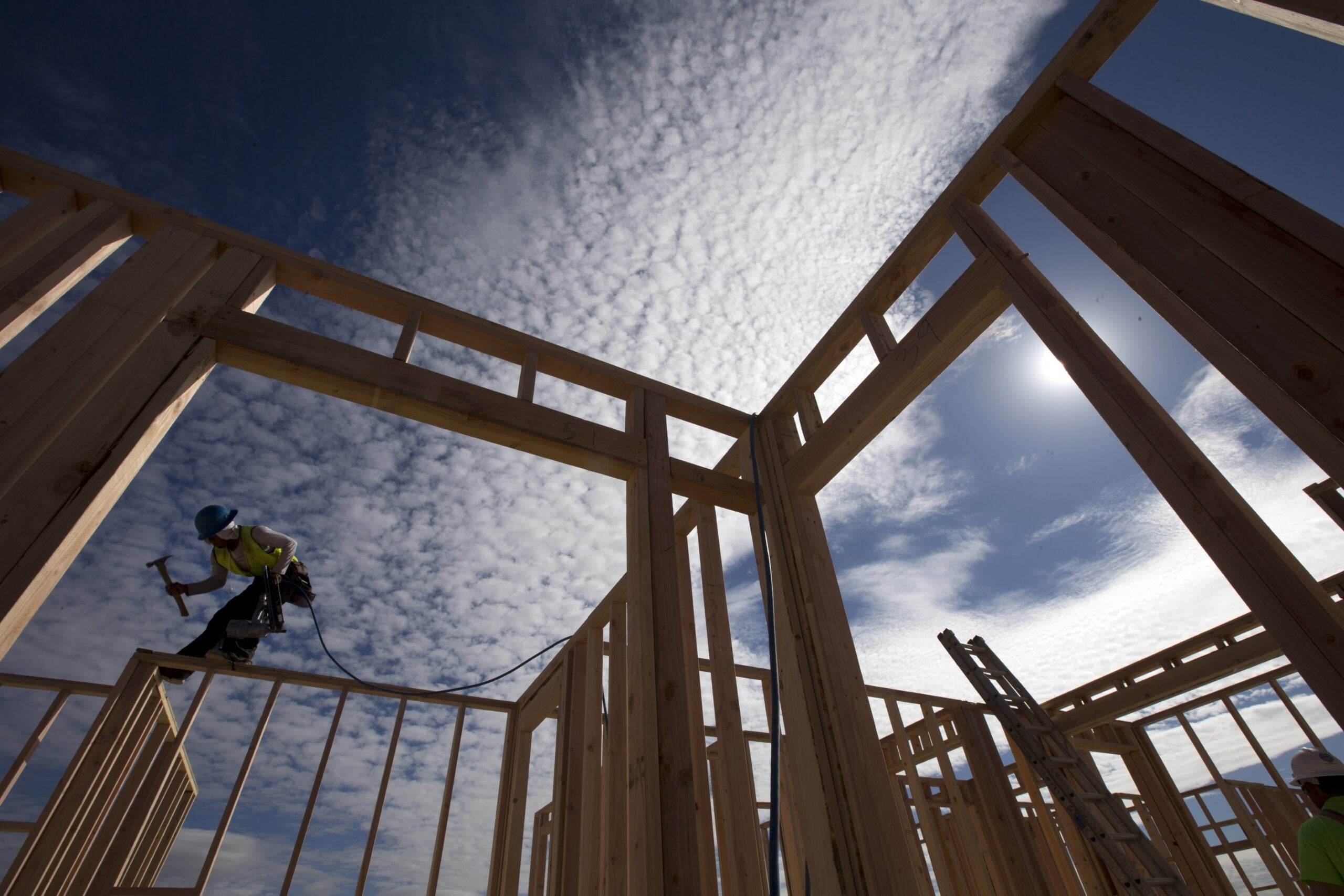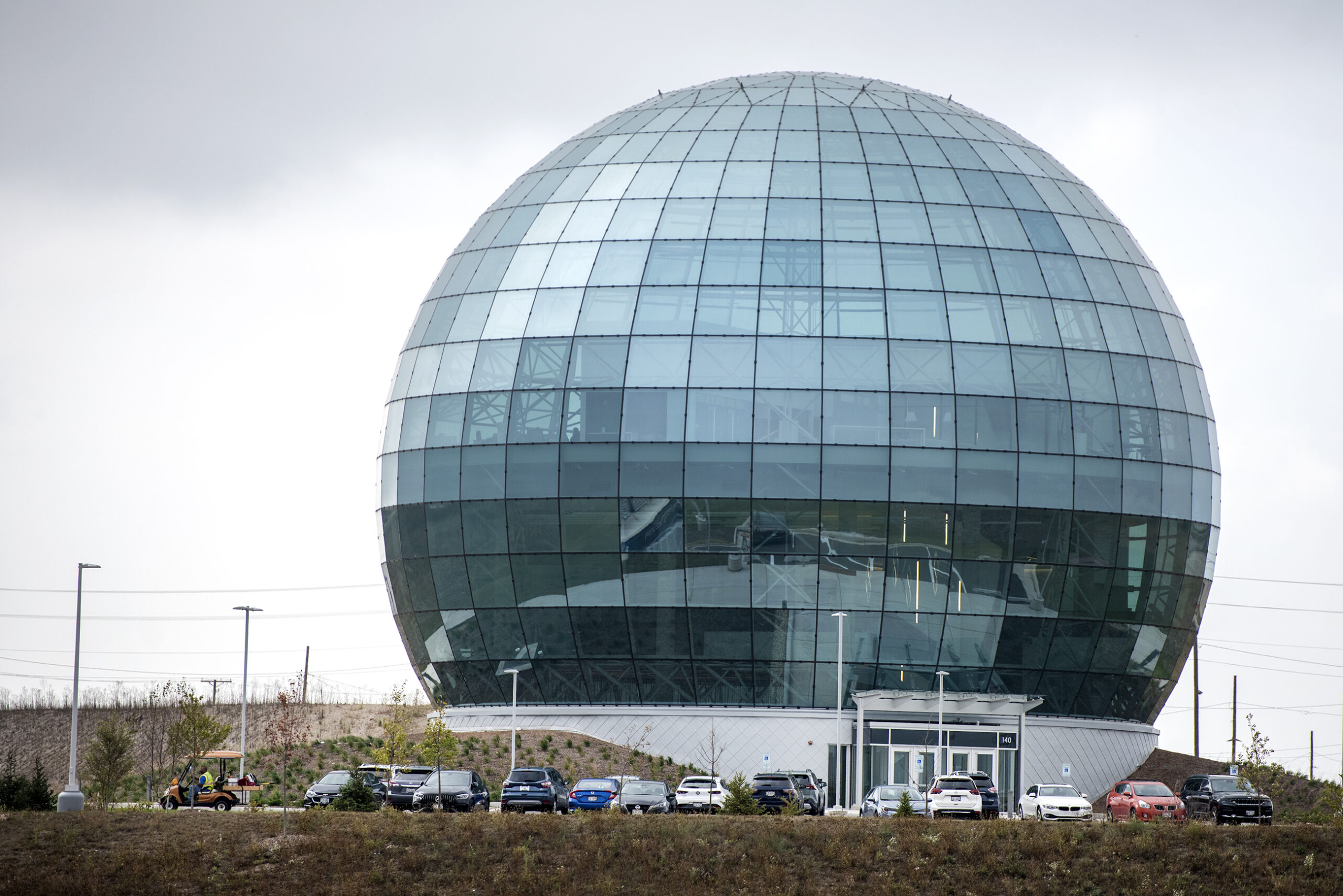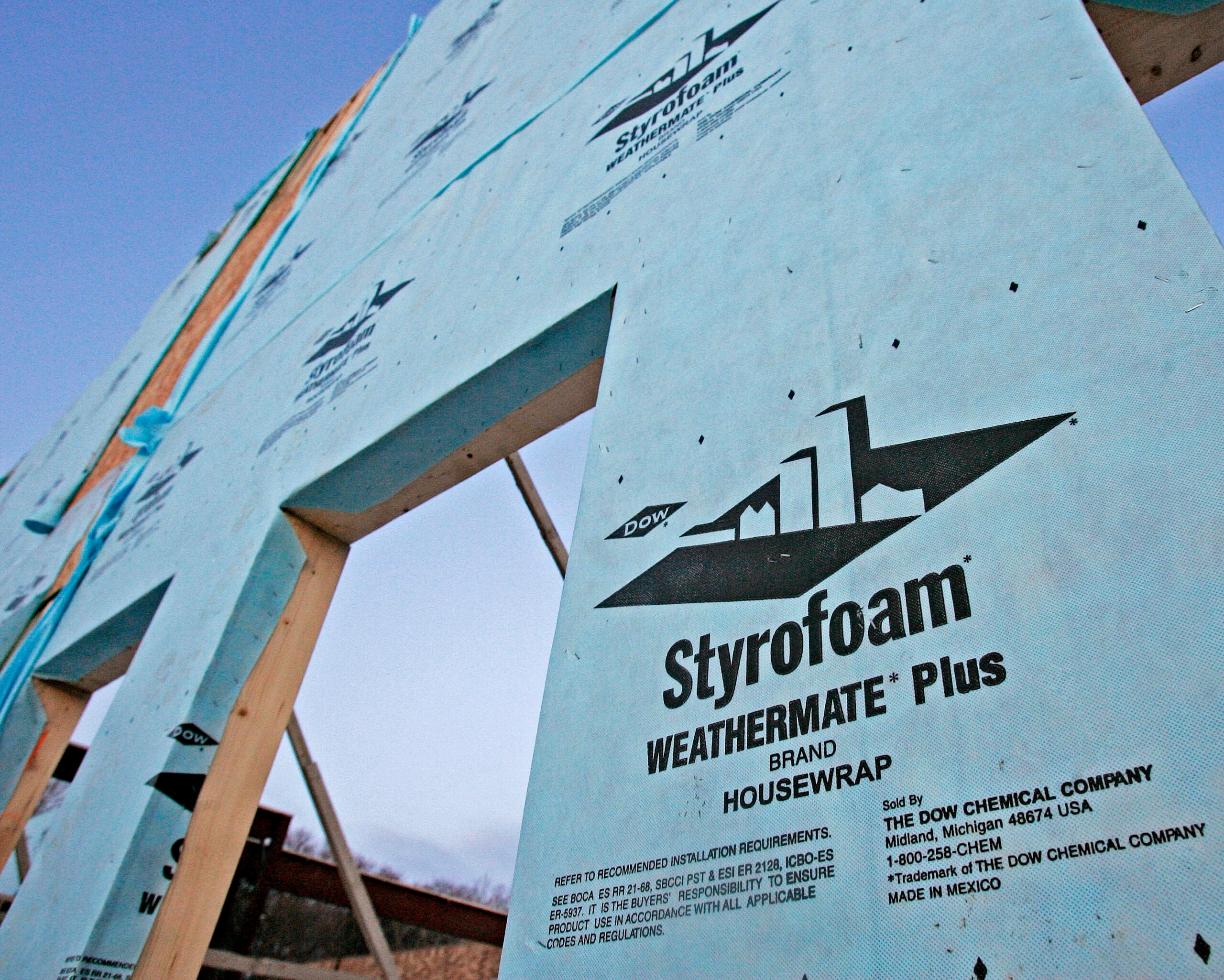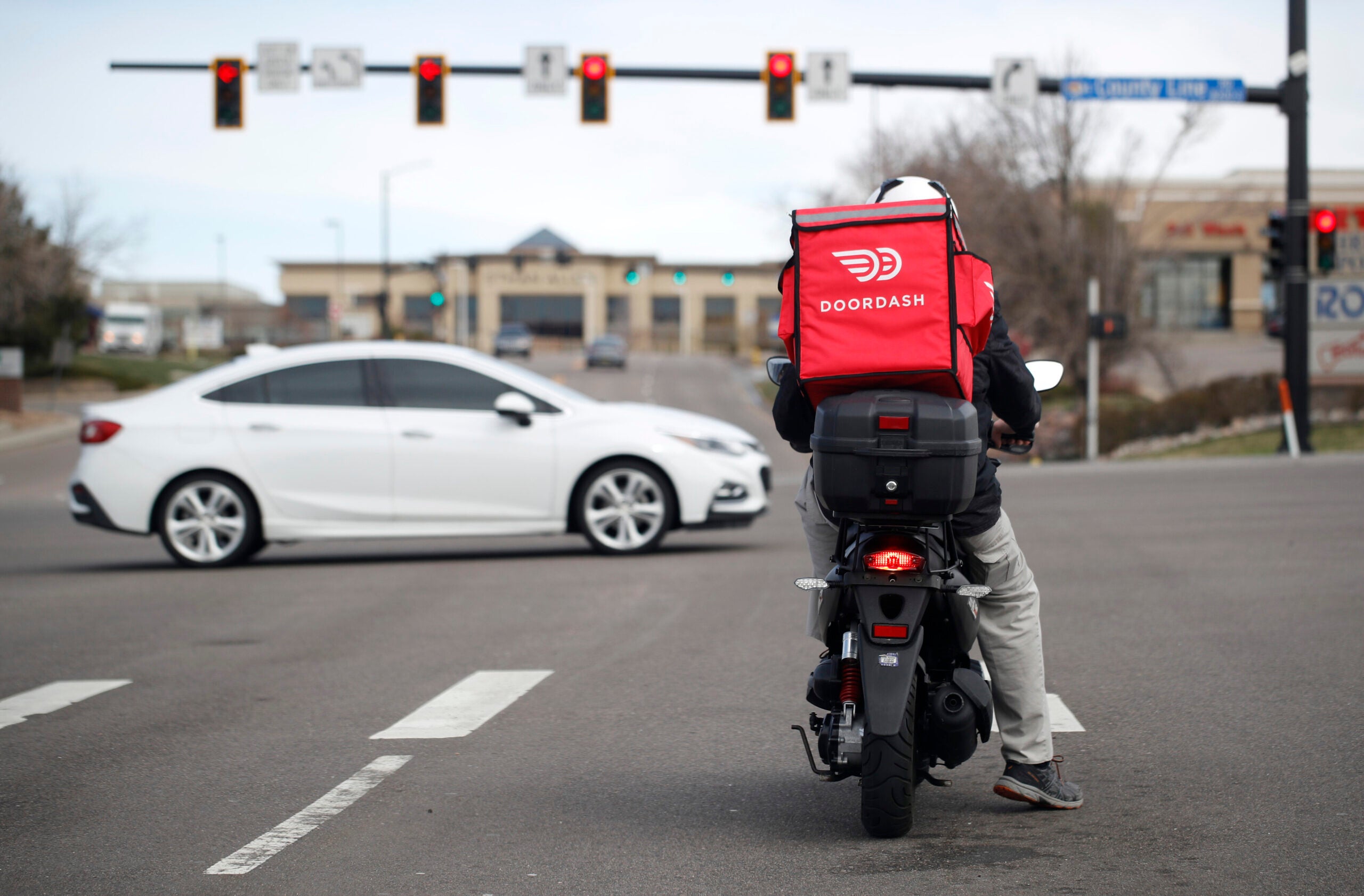For many homeowners around the country and in Wisconsin, finding a qualified and skilled tradesperson to do contract work can be a struggle — no matter the size of the job.
Beau Court and Dakota Styczynski were recently working on enclosing a porch on Green Bay’s near-east side. The two young men, both graduates of North East Wisconsin Technical College, are in high-demand for residential contracting work.
As Stycznski said: “I think we’ve had a stretch where we’ve worked like 17 days in a row. One night we worked until midnight dry-walling and mudding up a garage to get the work done for the guy.”
Stay informed on the latest news
Sign up for WPR’s email newsletter.
Social media sites such as Nextdoor are rife with posts from people in search of a “handyman” who can tackle projects.
Stycznski said there is a new sense of urgency from current and prospective clients.
“They want it done yesterday,” Stycznski said.
Court agreed.
“A lot of people want it done before they even call us,” Court said. “They just can’t find people to book it in because the contractors are booked back years, some of them are.”
Court added that a small team like that of his and Styczynski’s are more nimble.
“Starting off on our own, it makes it a big deal that we can actually get these projects in quick and get them done for people,” Court said.
Ryan Foley is the vice president of field operations at Green Bay’s HJ Martin and Son, a larger contractor that works on both residential and commercial projects. He said the company is reaching out to high school and even middle school students to fill the need for workers.
“We’re looking for people who are willing to learn a mechanical aptitude or work experience on the job training,” Foley said.
Foley said the company starts qualified workers at upwards of $30,000 a year plus benefits, but he doesn’t think most people don’t consider a job in the trades to be desirable.
“If they didn’t have a family member or friend, or relative in the trade, then they might not know that it even exists so that’s what we try to do, provide some awareness and exposure,” he said.
Foley also pointed to huge projects such as the Foxconn facility in southeastern Wisconsin as a major drain of workers, leaving fewer people to do smaller jobs, creating a backlog of contractor requests. Natural disasters such as hurricanes can also lure workers away from Wisconsin, he said.
Tight labor markets in areas like construction and manufacturing can threaten the pace of the nation’s economic growth, a 2018 Federal Reserve District report showed. The trends places like Wisconsin and the country are seeing are not good for the overall economy.
But according to Andy Sellner, the owner Alair Homes in Green Bay, people power isn’t the only thing in short supply.
Sellner, also the vice president of the Brown County Homebuilders Association, said the industry is short on, “both product and people.” He said 10 years ago he could get something like a door delivered in a couple of weeks, now it can take a month or more.
“Which shows that (suppliers) are running into issues at the factory as well, to produce the products that we need,” Sellner said.
Since full-time, skilled tradespeople are in such high-demand, Sellner and others say retired contractors are taking advantage of the situation and stepping back in to doing smaller residential jobs.
According to Gene Francisco, Northeast Wisconsin Technical College’s associate dean of construction and transportation, 2018 may see more workers than in years past.
“The Wisconsin Department of Workforce Development has predicted an 11,000 job increase over what they have had in 2017. So that is a lot of folks,” he said.
Anecdotally, Francisco added that at a time when workers are scant, the number of women entering the field is growing.
Still, the state Department of Workforce Development predicts a shortage of 11,468 jobs in “skilled trades” between July 2017 to June 2019. Skilled trades include carpenters, plumbers, and electricians.
For Francisco, even if all of those jobs were filled, it still might not be enough.
“It is just crazy right now, my neighbor is an electrician and I asked him about doing some work for me the other day and he said, ‘I’m not taking new customers.’” Francisco said.
Even though the wait lists can be daunting, he cautions home or business owners to only hire contractors who are licensed and insured.
Meanwhile people like Court and Stycznski are ready to take on more jobs.
As Beau said, “Once you learn some of this stuff you can apply it anywhere. You can do it on your own house, sibling’s houses, family, you can use this skill anywhere, it’s awesome.”
Wisconsin Public Radio, © Copyright 2024, Board of Regents of the University of Wisconsin System and Wisconsin Educational Communications Board.






